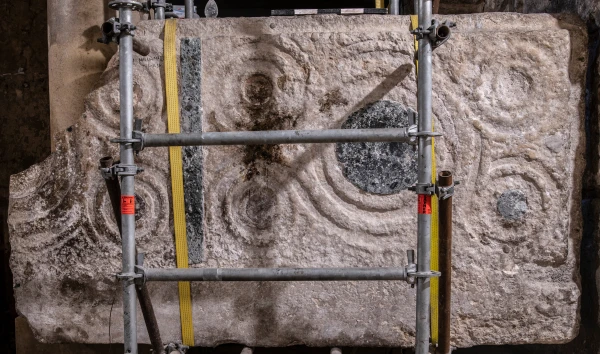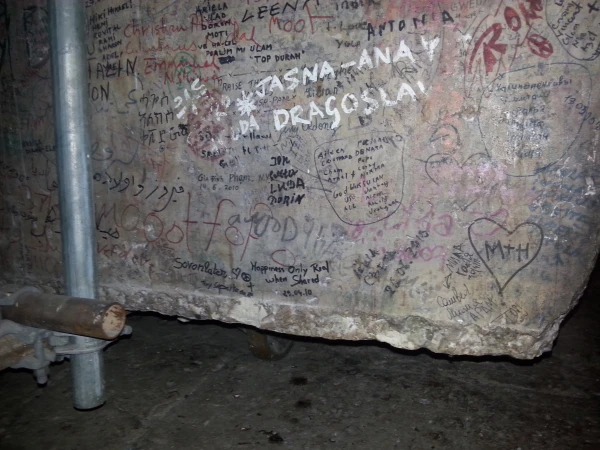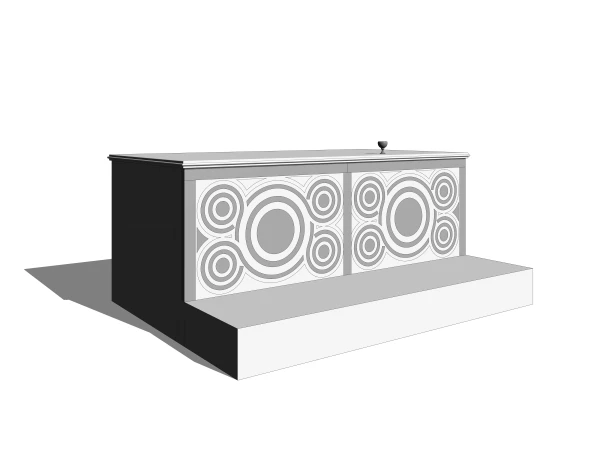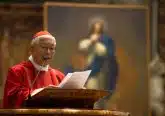Crusader treasure unveiled: Medieval altar found in Jerusalem’s Holy Sepulcher
CNA Newsroom, Jul 17, 2024 / 14:05 pm
Researchers have unearthed a Crusader-era altar in Jerusalem’s Church of the Holy Sepulcher in a serendipitous discovery that sounds straight out of an Indiana Jones plot.
The find, announced by the Austrian Academy of Sciences, offers a marble-clad window into medieval Christian artistry and papal power projection.
The altar, consecrated in 1149, is an impressive 3.5 meters (about 11 feet) wide, according to the academy, making it the largest known medieval altar to date.
For centuries, the altar stood as a silent sentinel to countless pilgrims before vanishing from collective memory in 1808, when a fire ravaged the church’s Romanesque section.

Ilya Berkovich, a historian at the ÖAW’s Institute for Habsburg and Balkan Studies, and Amit Re’em from the Israel Antiquities Authority stumbled upon this liturgical leviathan during renovation work.
The church has long been of interest to researchers and archeologists.
The newly discovered altar had been hiding in plain sight, concealed behind a graffiti-covered stone slab weighing several tons.

“That something so significant could lie unrecognized for so long in such a place came as a complete surprise to all involved,” Berkovich said.
The altar’s intricate cosmatesque decorations — a technique mastered exclusively by craftsmen in papal Rome — hint at a hitherto unknown connection between the Eternal City and the Christian Kingdom of Jerusalem. Using marble fragments often scavenged from ancient Roman buildings, these artisans created dazzling geometric patterns and ornaments, he said.
“The pope honored the holiest church of Christendom,” Berkovich noted, suggesting that the pontiff’s dispatch of a cosmatesque master to Jerusalem was a calculated move to underscore Christian claims to the Holy City.
The Church of the Holy Sepulcher holds paramount significance for Catholics as the site of Christ’s crucifixion, burial, and resurrection. Its importance as a pilgrimage destination has endured for nearly two millennia, drawing faithful from across the globe to its hallowed grounds.
The altar’s installation in 1149 coincided with a period of relative stability in Crusader-held Jerusalem, researchers said. Fifty years after the First Crusade captured the city, the Kingdom of Jerusalem sought to cement its presence through grand building projects and religious ceremonies. The rededication of the Church of the Holy Sepulcher, with this newly discovered altar as its centerpiece, marked a high point in the Crusaders’ tenure in the Holy Land.

This rediscovery enriches the understanding of medieval Christian art and illuminates the complex tapestry of relationships between Rome and Jerusalem during the Crusader era.
Researchers hope further investigation in papal archives might unveil more details about the altar’s creation and perhaps even identify the skilled artisans behind this monumental work.













